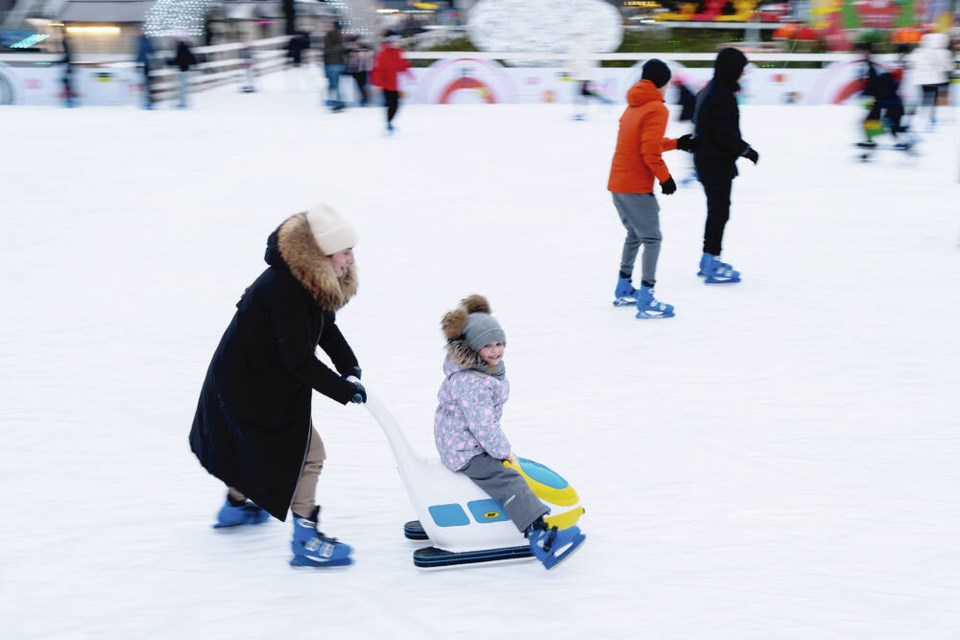Last week, we bundled up in parkas, pulled our hats over our ears and shoved our hands into gloves to escape a bitter wind. Shelters were at capacity. Pipes froze and burst across the Island and even in the Interior, where one would think buildings would be constructed to withstand cold weather.
Some of us played ice hockey at Panama Flats.
According to a B.C. Hydro bulletin issued on Monday, electricity demand around the province peaked at a record-breaking 11,300 megawatts on Jan. 12, near the start of the cold snap.
“Not sure I can remember a January when it was colder in Victoria than Toronto,” a colleague emailed.
The window for potential smugness on his part was shortlived, however. Within hours, the polar vortices freezing western Canada and the Maritimes shifted to include southern Ontario.
As chilly as it was on the Island, it was worse elsewhere.
But in the Interior, farther north and over the Rockies, snow, ice, and cold are to be expected in January.
In southern Alberta, it was a rare January in the 1980s and ’90s when I didn’t shiver miserably in the mornings, wondering how late my bus would be because of an overnight dump of snow.
Nature Boy, who spent many years in Edmonton, talks of annual –40 C January deep freezes predictably lasting three to four weeks.
That the recent 10-day run of extreme temperatures caught our neighbours across the Rockies short is due to how rare widespread deep cold has become there. Now, it is not only usually less extreme, it is also usually less frequent and usually affects less territory at any one time.
Global climate shifts are redefining winter almost everywhere. The season is acquiring a looser set of characteristic features, harder to specify, more variable and more unpredictable.
Canada may have entered the deep freeze 10 days ago, but according to a recent analysis by U.S.-based research group Climate Central, most of the country enjoyed temperatures an average of more than 5 degrees C above normal in December.
Many B.C. ski hills saw a fraction of the snow they normally get. Delayed opening dates and limited runs meant relatively few people hit the slopes over the winter break.
Even with snow at Mount Washington, on the North Shore and in the Okanagan now approaching acceptable levels, the loss of holiday revenues may set each operation’s finances back for the rest of the season.
Similarly, backyard and outdoor community skating rinks are becoming ever rarer and less reliable.
In the latest study on this quintessentially winter Canadian pastime, published in the journal Canadian Geographies, University of Waterloo researchers mapped where average North America January temperatures are generally suitable each year for building outdoor rinks and how they will change in the coming decades.
They show that, within 30 years, temperatures will likely be too mild during most winters for outdoor rinks across eastern North America. Outdoor rinks become less possible even in Canada’s prairie cities by the 2080s.
“Many North Americans who build outdoor rinks every winter will, by mid-century, be living in areas where temperatures are only cold enough to do so occasionally,” the authors say.
Here in Victoria, we’re so used to wet Januaries that outdoor skating is exceptional. Yet, one long-time resident of the area tells me that in the 1970s, skating on Saanich’s Panama Flats was possible for a couple of weeks most winters.
Yet, despite the return of our coastal fog and sog, a warmer, drier winter is predicted for western North America.
With an El Niño pattern now in place in the Pacific Ocean, meteorologists say the Pacific Northwest region should expect less snow and rain and prepare for yet another disastrous summer fire season in 2024.
Like ski hill revenue, the rain and snow we see through to the end of March may well not make up for recent warmth and dryness.
>>> To comment on this article, write a letter to the editor: [email protected]




